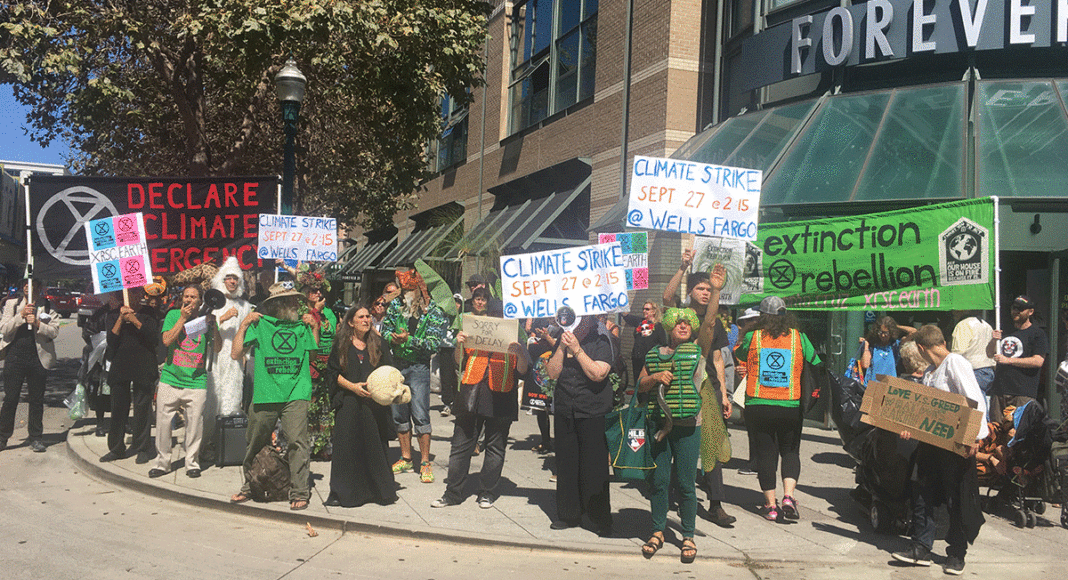Tamarah Minami, an eighth grader at Mission Hill Middle School, has been busy with extracurricular work the past couple of weeks. Her project is a big one. Tamarah and her classmates want to ensure the planet they call home gets a fair shot at a sustainable future.
Tamarah, 13, has been leading weekly meetings with students from other schools to organize local support for the Global Climate Strike on Friday, Sept. 27—in which students around the world will walk out of their classrooms and into the streets, demonstrating against the forces behind the climate crisis. She believes adults have underestimated her generation.
“And now we are strong because so many young people are speaking up,” Tamarah says.
Climate organizations, student associations, labor unions, and faith-based groups are collaborating on the strike week that began Friday, Sept. 20, and will culminate this Friday, Sept. 27. Over the past year, high school climate protests have been spreading around the world with increasing momentum, thanks in large part to Greta Thunberg. The 16-year-old Swedish student inspired students everywhere when she first began her “Friday for Future” school strikes in the fall of 2018, making her a worldwide icon. Earlier this month, Thunberg sailed to New York City to address the United Nations Climate Action Summit. Tamarah cites Thunberg’s activism as an inspiration.
Last year, a report from the U.N.’s Intergovernmental Panel on Climate Change found that humans must cut carbon emissions in half by 2030 and reach zero emissions within 20 years after that. The findings spurred international calls for action.
Grant Black, a politics major at UCSC, is a co-coordinator of the local hub of the Sunrise Movement, a youth-led climate justice organization that’s received considerable attention in its support of the Green New Deal. Black has been helping to organizing Santa Cruz’s student strikes.
“We are telling politicians to either step up or step aside, because we only have 11 years to address this crisis, and less time to address it politically,” Black says, “so we are fighting hard for a Green New Deal for all people.”
Young people like Black have amassed considerable support for their green vision and a brighter tomorrow. Issara Willenskomer sees himself as something of an “elder advisor” to the Sunrise Movement’s local hub. He emphasizes that adults are playing a secondary, supportive role in the youth-led effort.
“The young are the ones with actual skin in the game,” he says.
With the walk-out coming up on Friday, Santa Cruz City Schools Superintendent Kris Munro tells GT that state law “doesn’t allow us to excuse student absences for walk-outs or political activities.” She adds, however, “We believe in supporting student voices and encouraging good environmental stewardship.” Munro says there will be several in-school activities related to the climate crisis planned for various campuses.
In solidarity with the youth-led student strike, an array of local climate activist groups are hosting teach-ins, guerilla street theater events and panel discussions.
Pauline Seales, 75, a key organizer of Santa Cruz Climate Action Network, stresses that all of this climate activism has a non-violent focus, so parents don’t have to worry about their kids participating.
Seales, who earned a physics degree from Leeds University in the United Kingdom, compares the world’s nations to a large fleet of buses. The whole fleet, she explains, has been heading toward a cliff for some time.
“Most of them have got the message that there is, in fact, this precipice ahead,” she says. “Many have begun slowing down, and some have even begun turning around. Some have made a lot of progress on that, and some are just starting. But we, in the American bus, have as a driver a guy who is shouting, ‘There is no precipice! No reason to worry! Press on—full speed ahead!’ But the people in the bus are beginning to get pretty darned upset.”
A schedule of events is available on the Climate Action Network’s website, scruzclimate.org.














